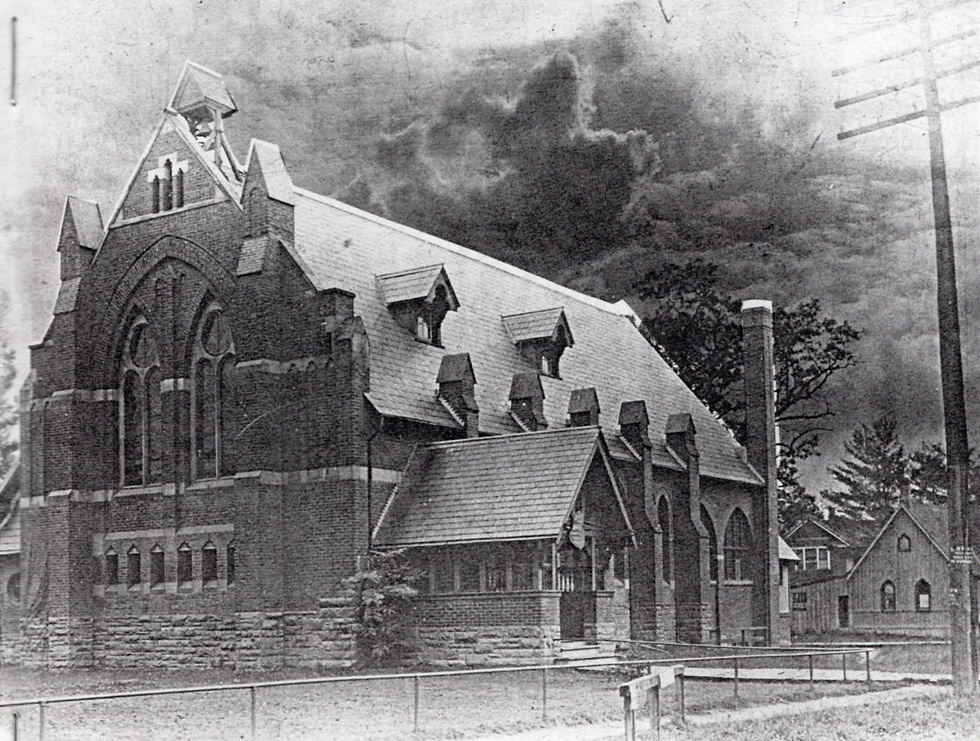Year End Notes: 1952, 1962, 1972, 1982, 1992
- Christopher Rutty

- Dec 31, 2022
- 3 min read
Updated: Apr 15, 2023
In celebrating the 100th anniversary of St. John’s home on Humberside, exploring the church’s history is not only about discovering or re-discovering the past, it is also about discovering inspiration and practical ideas of value to its present and future. An interesting window into the ups and downs in the life of the St. John’s church community and the building itself are the Annual Reports, or Vestry Reports, that have been preserved. There is an almost complete run of such annual reports that date from 1950 to the present. As we are at the 2022 year-end, I’ve focused attention on St. John’s annual reports from 1952, 1962, 1972, 1982 and 1992, to see what they reveal about how things have changed over that period. You can read through these annual reports here, http://healthheritageresearch.com/clients/SJWT-History/Annual-Reports/
A few things that struck me include: In 1951-52 the church underwent a significant renovation and the 1952 report was pleased to report the parish paying off a significant part of the bank loan obtained for the project. Other annual reports from the 1950s reveal healthy finances at St. John’s, which were sufficient to enable to purchase of the property at 204 High Park in 1959, which served as the Parish House and accommodated many church activities for many years. The property was ultimately sold and today is the Priory for the Brothers of the Holy Cross.
Despite the positive finances, a disquieting trend in church membership and attendance began in the early 1950s and never recovered. There were 741 families on the parish rolls in 1950, then 710 in 1952, and only 182 in 1959. When counting individual adult members, there were 2,055 in 1950, 2,034 in 1952 and 1,195 in 1959, and a drop in children from 548 in 1952 to 385 in 1959. The 1962 annual report showed 380 families, but the 1972 report did not provide a number. By 1982, church membership statistics were kept based on the issuing of envelopes and commitment cards, the numbers and giving through which had fallen, leading to a recurring deficit budget into the 1990s. Such declines and challenges were not unique to St. John’s and reflected numerous changes in the local population and in the broader culture with respect to organized religion. Facing up to and working to overcome such declines, deficits, and obstacles in the life of St. John’s has prompted and inspired a variety of creative initiatives, particularly over the last 50 years. An important focus of the SJWT-100th during 2023 will be to highlight past successes and challenges the St. John’s community has encountered. This look back will also point to the novel ideas and approaches that have been undertaken to survive and grow, many of which can be adopted, adapted, and applied to the St. John’s community today and into the next 100 years. The next meeting of the SJWT-100th Team will Monday, Jan. 9 at 7:30 via Zoom, https://utoronto.zoom.us/j/87221846666 Everyone’s invited to brainstorm ideas for 100th-themed events and ideas about historical subjects/themes that you’d like to see written about and/or that you might wish to contribute to. Contact Christopher Rutty – hhrs@healthheritageresearch.com – with ideas, contributions, questions.

The cover of the Christmas 1992 newsletter included a photo of St. John’s choir taken in 1922 at the second church building on Dundas St. W. and St. John’s Rd, not long before the parish moved to the new church on Humberside. There is also a “Pages From the Past” article that focuses on what life was like at St. John’s at Christmas in 1922 and why it was necessary to move to a new location further south.
Originally published in the St. John's Newsletter on December 31st, 2022













Comments